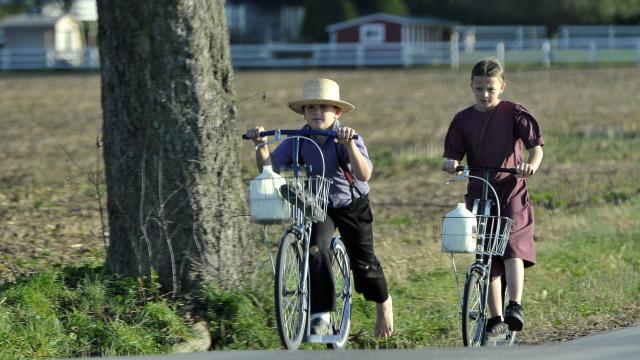In a new paper this week, doctors at the Mayo Clinic say they’ve uncovered the cause of a mysterious heart condition that had suddenly killed over a dozen young, healthy members of a tight-knit Amish community. The culprit? A previously undiscovered genetic mutation that runs in families.
Study author Michael Ackerman, a professor at the Mayo Clinic College of Medicine and Science, is also director of the Clinic’s Sudden Death Genomics Laboratory. For years, the lab has investigated cases in which seemingly healthy people died with no clear cause, hoping to unearth new ways our genes can send us to an early grave. In many of these cases, people’s hearts simply stopped beating, a condition otherwise known as cardiac arrest.
According to Ackerman, the journey to unravelling this particular mystery was a long one.
“The medical examiner first contacted me and my research team over 15 years ago, after the deaths of two Amish siblings during recreational play over four months’ time,” Ackerman told Gizmodo via email. “For me, in situations like these, it is either foul play or genetic. [But] there was no way based on interviews with the family that this was foul play, so we searched for the genetic cause of sudden cardiac death.”
As is often the case with smaller, isolated communities of people, the Amish have more in common genetically with one another than people living in a typical modern community do with their neighbours. Unfortunately, the less genetically diverse a population is, the easier it is for harmful genetic conditions to emerge and be passed down to the next generation. These conditions are often recessive, meaning it takes having two copies of the unlucky genetic variation—one inherited from each parent—for symptoms to show up. Those who carry just one copy of the bad variation usually end up with no health problems, and even if they have children with another carrier, there’s only a 25 per cent chance a child of theirs will have both copies.
From the start, Ackerman and his team suspected a recessive mutation could be responsible for what happened to the children, since their family tree had a history of closely related ancestors while the parents themselves seemed perfectly healthy. But their initial genetic sweep failed to turn up potential genetic clues.
Tragically, two more children in the family would later die of sudden cardiac arrest as well, six and eight years after the first deaths, respectively. All of them, no younger than 12, had been playing or exercising right before their deaths.
By the time of these newer deaths, though, genetic technology had advanced enough for the team to try looking again. In particular, they were now able to scan a person’s entire exome, the bits of DNA that actually program our cells to make the building block proteins we need to live. And this time, they found a likely suspect: a duplication of DNA found in segments of the RYR2 gene as well as in another region that controls its expression.
[referenced url=” thumb=” title=” excerpt=”]
The RYR2 gene helps regulate our heart muscle’s calcium release channels (CRC). These channels need to carefully manage the flow of calcium in and out of heart cells to keep the organ healthy and beating as it should during times of rest and stress alike. People are already known to have genetic mutations that can leave them with overactive CRCs—a condition that also raises their risk of sudden cardiac death. But this specific mutation seems to create the opposite problem, leaving victims with too few CRCs.
As the team theorised, the children who had died all had two copies of the mutation, while the parents and unaffected siblings all had either one or no copies. They then came across a second large Amish family, unrelated to the first, that also had a history of healthy young people suddenly dying of or barely surviving cardiac arrest. And when the second family was tested, nearly all of those with two copies of the mutated gene had died or developed these symptoms.
The team’s findings were published Wednesday in JAMA Cardiology.
“Ultimately, through a combination of technology and tenacity, we found the answer,” Ackerman said.
The mutation and the condition it causes—coined “calcium release channel deficiency syndrome” by the team—still needs to be studied by other researchers before it can be confirmed as a genuine disorder. But so far, 23 people have been identified with the mutation, with 18 having died, across the two families, while more relatives are being tested by the team. Ackerman said his team’s work has been greatly appreciated and celebrated by the families.
“The power of closure (figuring out the truth about what was behind all of these tragedies) and clarity (being able to figure out who does and who does not have these markers) is incredible, as you can imagine,” he said.
Our genes usually influence our health in very subtle ways. Even people who have a clearly troublesome mutation don’t always become seriously sick. But conventional tests haven’t been able to tell when someone with the condition will have heart troubles. And given how quickly lethal it can be, Ackerman expects that affected individuals will need an implantable cardioverter-defibrillator that can intervene when the heart loses control of itself. More importantly, though, we can now find these people before it’s too late.
“Although we could not save the lives of these precious children and teenagers and young adults, we now have a diagnostic biomarker such that no more deaths from CRC deficiency syndrome should have to ever occur again,” Ackerman said.
